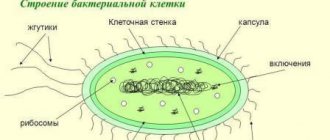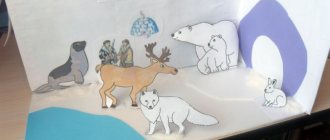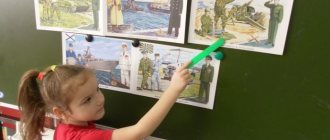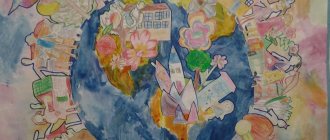All parents would like to raise a child who can think logically and flexibly, find innovative solutions, analyze a problem comprehensively, and be prepared for difficulties. After all, this means that the little person will be adapted to live in changing conditions. The TRIZ system, adapted for preschoolers, can help with this. What kind of technique is this, what is its essence?
What is TRIZ?
The theory of inventive problem solving, or TRIZ, was developed at the end of the last century by Heinrich Saulovich Altshuller. But he was not a teacher, but an inventor and developed a method for effectively solving technical problems. For many years, this technology has been successfully used to work with schoolchildren at young technician stations. It made it possible to develop creative thinking qualities in young inventors: flexibility, consistency, range, originality, creative imagination, and ingenuity. All this gave them the opportunity to invent consciously, purposefully, logically, using all previous experience collected in the form of a single algorithm.
Based on TRIZ technology, pedagogical methods have been developed and are successfully used in kindergartens to develop thinking in preschoolers: creative, dialectal, abstract.
The main idea of this method is that the laws of development of technical systems can be learned and used to solve inventive problems consciously and logically, avoiding a lot of trial and error.
The goal of working on this system is to stimulate cognitive, creative and speech activity, to teach a little person to think systematically, understanding the essence of the ongoing processes, their unity and contradictions, to independently see the issue and be able to find a solution.
TRIZ system operator: expanding the field of search for strong solutions
0 votes
Hello friends! We continue to talk about the theory of solving inventive problems. Earlier, we already agreed that this technique is fundamentally important for harmonious, comprehensive and truly active creative thinking in children (and adults, by the way, too). Today I invite you to learn about what the TRIZ system operator is, how it works and where it can be used.
Let's learn to think systematically!
Not all adults can think three-dimensionally, taking into account all, without exception, components of the subject of analysis. What can we say about the kids? As a result, some points remain missed, and our understanding of things becomes incomplete, and therefore not completely correct and objective.
Are you upset? I hasten to reassure you - this annoying oversight can always be corrected! Especially when we are talking about children, who tend to absorb new information at lightning speed. The main thing is to present it correctly.
Emphasizing the fundamental importance of comprehensive systems thinking, the Soviet researcher, creator of the TRIZ methodology, Heinrich Altshuller, developed the concept of a system operator.
It was designed to fill the gap in our thinking, giving people the opportunity to think dozens of steps ahead, identifying subtle cause-and-effect relationships and patterns of things. According to the scientist, only in this case will we be able to transform the world without fear of the destructive consequences of our not fully thought-out decisions and actions.
How does a system operator work?
In essence, the system operator is a kind of template for the correct thought process. It contains such analysis criteria as:
- System. This is the object that we are going to study or even transform.
- Subsystem. This is what is included in the system - its constituent parts.
- Supersystem. This is a certain higher level system, of which the object we are studying is a part.
- Past. What/who was the object before? What were its properties, capabilities, tasks?
- The present. What does the object represent today? What is he like? What are its functions?
- Future. What will happen to the object after some time? Which one exactly? Why?
In addition, Altshuller identifies such a concept as “antisystem”. It is understood as a certain object/group of objects that in one form or another counteract the system we are studying. These are peculiar enemies of the object under study, which somehow interfere with it.
If you give examples of the work of a system operator in a kindergarten, you will get something like this:
- System. Cat.
- Subsystem. Paws, ears, whiskers, leather nose, fluffy tail, funny face, etc.
- Supersystem. Pets.
- Past. She used to be a kitten. She was raised by her cat mother, who taught her daughter to eat, walk, hunt and run away from enemies.
- The present. Now the cat is already 3 years old. She is big, fat, funny, loved.
- Future. The cat will grow and learn new things. She will gradually grow old. Just like people.
- Anti-system. Cats are afraid of dogs and are not friends with them. Cats are also afraid of water, although they can swim.
Or another example:
- System. Ripe tomato.
- Subsystem. Peel, soft center, seeds.
- Supersystem. Plants. Vegetables.
- Past. There was a tiny green tomato that appeared on a tomato plant.
- The present. Now it is a ripe vegetable of bright red color. Sweet and juicy. Tomato is very good for health.
- Future. We will cut it into pieces, mix it with other chopped vegetables and prepare a salad, which we will then eat.
- Anti-system. Tomatoes are afraid of all sorts of bugs and worms that try to eat them in the garden.
As you can see, this technology, on the one hand, is extremely simple. But, on the other hand, it allows children of any age to receive comprehensive information about the object they are studying. Just imagine how many new things kids will learn if they practice this method every day.
But you can use it anywhere! Are you bathing your baby? Why not talk about where the water from the bathroom comes from and where it goes? Are you eating? Talk about vegetables, fruits, bread and milk, and other products. Are you walking? It's time to think with your child about flowers and grass, butterflies and birds. About why the sun shines and why the moon takes its place at night. And so on. Come up with topics for conversation in accordance with the age of the child and build a discussion based on the principles of the system operator.
Little kids will certainly enjoy this game, and at the same time it will help them discover something new and useful every day in a simple and fun way. In addition, from an early age, a child will get used to thinking three-dimensionally, analyzing all the components of an object of interest to him.
Is this just for children?
Well, of course not! Depending on the complexity of the system in question and how deeply you dig into various aspects of the system operator, the technique can quickly go from a fun activity for preschoolers to a serious analytical process for adults. Here everything will depend solely on your needs. The topic and object can be absolutely anything:
- business;
- economy;
- policy;
- management;
- advertising;
- innovative developments;
- production sector;
- sociocultural environment;
- philosophy, etc.
To understand how this technique works, take a topic of average complexity (in your understanding, of course) and try to run it through the system operator table. For example:
- My quarrels with my wife.
- A recently introduced technique for promoting an online store website.
- Daughter's passion for drawing.
- Brother's stock market game.
- My son's tendency to have a night owl routine.
- A cosmetic product created by my company.
Thanks to systems thinking, you can understand where it all began, what you have today, and what you can potentially expect in the future. You will understand the true essence of things and will be able, if necessary, to make adjustments to them. So to speak, before it's too late.
Books to help
The theory of solving inventive problems is not the simplest thing in the world. And if it is understood or applied incorrectly (and this, unfortunately, happens very often), then you will not see the results of your efforts, or they will be too insignificant. To avoid this, I recommend that you take help from time-tested and responsible educational books that will not allow you to go astray.
For children, we can recommend the series of books “The Newest Adventures of the Kolobok”, in which they will be offered a lot of entertaining puzzles and adventures on various topics. The children will playfully learn to think systematically and creatively.
For adults, I suggest paying attention to Yuri Salamatov’s book “How to Become an Inventor” and the special TRIZ training he developed. Both works by the author are perfect for both students and practitioners seeking to increase their productivity and professionalism.
**
Perhaps that's enough for today. Look ahead to my other articles on this topic. Subscribe to the blog so you don't miss anything! All the best, your Yuri Okunev!
Basic principles of the TRIZ methodology
The implementation of the TRIZ system in preschool institutions is based on compliance with several important principles:
- The principle of freedom of choice. It must be observed in any action - teaching or managing.
- Operating principle. Any creative task must be based on practical activity.
- The principle of openness. The child needs to be offered tasks that do not have a single correct solution and imply variability.
- The principle of ideality. Creative tasks using this method do not require special complex equipment and can be used in any classroom, maximizing the interests, capabilities and knowledge of preschoolers.
- Feedback principle. The teacher has the opportunity to constantly monitor the children’s mastery of mental operations, since the tasks are built sequentially, and new ones use elements of the previous ones.
The fundamental principle is the principle of conformity to nature in teaching. That is, it is necessary to start from the nature of the child: his age, abilities, patterns of his development in the surrounding reality. Here you cannot do without an individual approach to the child. And the refusal to equate all children “with the same brush” allows each preschooler to maximize their inclinations and develop the necessary abilities.
Different ways of working
The TRIZ technology arsenal contains many different methods that teachers successfully use in working with preschoolers.
- Brainstorming method. Participants in a discussion of a problem must express the maximum number of options for solving it, including the most fantastic and paradoxical. From these options, the optimal one is then selected. Of course, the tasks to be solved must be appropriate for the age of preschoolers (for example, how can you put out a fire in a house if there is no water). During brainstorming, one develops the ability to hear each other in a constructive debate, not to be afraid of criticism, to defend one’s point of view, to be loyal to other opinions, to analyze, and to understand that there are no hopeless situations.
- Directory method. Good for the development of a child’s speech, teaches him the basics of creative storytelling. The essence of the method is that preschoolers look for the answer to the teacher’s question by randomly pointing to any place on the book page. The resulting words, which are not related to each other, need to be combined into a consistent story. The main thing here for the teacher is to choose the right questions and ask them in the correct sequence.
- Method of focal objects. Develops the child's imagination, speech, imagination, and ability to control thinking. The essence of the method is to “try on” the properties of some objects on others (outwardly they should not be related to each other). Children learn to establish associative and cause-and-effect relationships between random objects. Preschoolers are offered several different objects, they must name their main properties, and then they need to figure out how to transfer them to the intended object.
In addition, there are methods of systemic and morphological analysis, typical fantasy, thinking by analogy, the Robinson method and many others. Each of them solves its own problems. But the general motto of working methods in TRIZ is curiosity and creativity in all its manifestations.
Essence
At the moment, the primary task of the state is to prepare people who, at any age, will be able to show initiative, innovative thinking and creative abilities (creativity) in solving emerging problems. This is facilitated, among other things, by TRIZ technology in preschool educational institutions. It is aimed at developing in children not only imagination, but also the ability to think systematically and comprehensively, to relate one’s own or someone else’s experience to a specific situation and, based on existing knowledge, to correctly maneuver in a complex and diverse reality, competently and effectively solving their still “small” problems .
At first, the theory of solving inventive problems was inextricably linked with the technical sphere, because in 1946 its author, G.S. Altshuller, had the main goal of accelerating the inventive process. The Soviet scientist and science fiction writer wanted to transform invention from an exact science into an art and thereby created a universal development, which subsequently began to be actively used in other highly specialized areas: IT, the construction of cars and aerospace vehicles, and, of course, pedagogy and education!
Using TRIZ in preschool pedagogy
Today the TRIZ method is quite popular in kindergartens. On the Internet you can find many pedagogical presentations on the topic of using TRIZ in working with preschoolers. TRIZ pedagogy as a direction was formed in the 80s of the last century. The founder of the theory G.S. Altshuller recommended starting such classes with children of about 5 years of age (however, today there are successful examples of work even with children 2–3 years old).
Unlike other methods, TRIZ prepares a child to solve the most difficult problems in life, using world experience in the field of invention, processed for children's perception.
In TRIZ pedagogy there are courses for different ages (from kids to students). Preschoolers, for example, are offered tasks to invent new toys, outdoor games, riddles, etc.
The main tool in working with preschoolers is pedagogical search. At the same time, the teacher does not give the kids ready-made solutions and knowledge, but teaches them to find these solutions on their own. He himself needs to have those qualities that he tries to instill in children, to set an example for them, to be a universal creative person.
The preschool education program consists of several successive stages:
- Search for the essence. Kids learn to use objects multifunctionally.
- Identifying contradictions in an object or phenomenon (there is always something good and something bad in it).
- Resolving contradictions (for example, how to transfer water with a sieve?).
- Invention. Children learn to search and find their own solution to a problem. They fantasize, think, and come up with new objects.
- Solving fairytale problems, composing new fairy tales. A variety of creative activities are possible here: games, drawing, design, modeling.
- Finding a way out. With the help of acquired knowledge, intuition, and using original solutions, a preschooler learns to search for and find a way out of a difficult situation; he tries to calculate his strengths and abilities to solve the problem.
Presentation “TRIZ technologies in kindergarten” presentation for the lesson (middle group) on the topic
Slide 1
Kindergarten "SOLNYSHKO" p. Vagai TRIZ technologies in kindergarten Belova Rimma Ruslanovna, teacher
Slide 2
TRIZ - theory of solving inventive problems TRIZ (theory of solving inventive problems) technology was developed by science fiction writer Heinrich Altshuller (10/15/1926 - 09/24/1998). The technology was designed for an adult audience, but recently the TRIZ method has become very popular in kindergartens. TRIZ pedagogy was specially developed for this purpose. Its meaning is the development of the child’s creative abilities. Without disrupting the gameplay, and without losing interest in activities for preschoolers, the child develops intellectually, learns new things and adapts to many situations that he may encounter in his future adult life.
Slide 3
The purpose of using TRIZ in kindergarten is to develop the qualities of thinking. The uniqueness of TRIZ technology is that it can be used in the work of both experienced teachers and beginners Flexibility Mobility Systematicity Dialecticality Search activity Striving for novelty Speech development Development of creative imagination
Slide 4
TRIZ is a set of methods that allow you to solve these most inventive problems Method of solving contradictions Morphological analysis Method of focal objects Simple fantasy techniques System operator Brainstorming Catalog method Resource method Little men method Synectics
Slide 5
Method of resolving contradictions Teaches a preschooler to constantly find good and bad sides in the same object or action. The game “Good - Bad” leads children to understand the contradictions in the world around them (For example, rain: waters plants, refreshes the air, fills rivers with water - good; people get wet in the rain, dirty puddles, cold - bad).
Slide 6
Morphological analysis The essence is to combine different options for the characteristics of a certain object. The goal is to identify all possible facts for solving this problem that could have been missed during a simple search. For example, let's invent a new chair. On the left we write possible shapes (circle, square, cube), and on the right - the possible material from which it can be made (glass, sponge, iron, paper).
Slide 7
Synectics are analogy methods that develop memory, thinking, and imagination.
Slide 8
Focal object method Helps remove psychological inertia. An object for improvement is given, and the properties of another object, which is in no way connected with it, are transferred to it. Unexpected combinations produce interesting results. For example, an apple is a pillow. Select 5-10 definitions for each of them, and then swap the objects. After the resulting combination, it is necessary to give the object the necessary qualities: a soft apple (needs to be baked in the oven), a round pillow (sewn from circles).
Slide 9
Simple techniques of fantasy Techniques of fantasy Artistic image Discussion with children of the consequences of changes Change in size (reduction, increase) Thumbelina, Turnip How change can be practically used Change in structure (crushing, combining) Losharik, self-assembled tablecloth Scope of application of the resulting images Change in mobility (revitalization, petrification) Stove at Emelya, Stone Flower Creation of problematic situations by changes Special (S) and universal (U) magic S - boots-running U - magic wand Magic has limitations Transformation of the properties of time The Tale of Lost Time, Peter Pan Possibility of transforming objects Fantasy techniques are based on physical transformations of objects and their parts, features, places of events:
Slide 10
System operator Or “system elevator”. Teaches you to be able to analyze and describe the system of connections of any object in the material world. Stage 3 Supersystem in the past Habitat Supersystem in the present Habitat Supersystem in the future Habitat Stage 1 System in the past Who was he? System in the present Who? System in the future Who will it be? Stage 2 Subsystem in the past Parts Subsystem in the past Parts Subsystem in the future Parts
Slide 11
Where can I meet you? Forest, park Where can I meet? Forest, park Where can I meet? Forest, park What happened? Sprout What? Tree What will happen? Stump What parts does it consist of? Root, stem, buds What parts does it consist of? Roots, trunk, branches, leaves What parts does it consist of? Root, snag The method of system analysis allows you to introduce the parts of an object, consider the object in dynamics, see it simultaneously in a functional, structural and temporal aspect. Is central to the exercise of developing systemic logical analysis
Slide 12
Brainstorming This is a collective discussion of a problem situation. During a brainstorming session, mental activity is activated; it makes it possible to make any assumption that will be accepted for discussion without criticism. For example, a brainstorming topic could be “How to catch a mouse?”
Slide 13
Catalog method Or the “snowball” method. In the process of solving a problem, a layer of events occurs. To create characters, objects, and situations in an event, a children's book with a minimum of illustrations, prosaic if possible, is used. The adult asks questions about the future plot of the fairy tale (Who are we writing about? What is he like? Who were his friends? Who interfered with them? How did it all end?), and the children look for the answer in the book, randomly pointing their finger to any place in the text
Slide 14
The resource method teaches you to identify the capabilities of an object and come up with ways to use its resources in problem situations. At the same time, the “energy of the fields” begins to operate.
Slide 15
Resources have energy fields Mechanical - physical impact; Acoustic – sound impact; Thermal – heating, cooling; Electrical – use of current energy; Magnetic – the use of magnetic attraction. To prevent an unfavorable action and obtain a favorable result, it is proposed to replace (or introduce) the action of any field
Slide 16
The “little men” method A technique that allows you to explain and model the internal structure of objects and the interactions between them, allows you to clearly describe the state of aggregation of a substance (solid, liquid, gaseous). All objects consist of many little people, and the state of the substance depends on how they behave and what commands they obey.
Slide 17
The people of the gaseous substance are very restless. They love to jump, run, fly. The people of the liquid substance stand next to each other without holding hands, so they are easy to separate. The people of the solid substance hold hands tightly - that’s why the object is solid. It takes effort to separate it.
Slide 18
Stages of the “little men” method Modeling an object, a substance: Modeling the processes occurring with a substance: Modeling the processes of interaction of two objects: a solid body - paper, a liquid body - water. The paper is torn and water is pouring out. paper absorbs water Processes of interaction of objects and substances: “+” – connection, “-” – separation, “0” – neutral
Slide 19
All of the listed TRIZ methods are implemented in stages, depending on the level of preparedness of the children: Stage 1 - the teacher himself tells and shows what he is doing (with the help of a Helper Toy); Stage 2 – the actions of the adult are supplemented by children; Stage 3 – the children themselves perform actions or create situations, and the teacher complements, clarifies and expands the children’s ideas; Stage 4 – the child independently performs actions on a problem or situation.
Slide 20
TRIZ methods help to implement various manuals: Rings of Lull “Magic Path”
Slide 21
GOOD LUCK IN YOUR WORK!
What does the technique give to a preschooler?
First of all, it stimulates diverse thinking, spurs cognitive activity, promotes successful socialization in the children's team, and the development of speech skills.
In addition, TRIZ for preschoolers is useful because:
- relieves fear of the unknown;
- removes psychological barriers;
- teaches you to think broadly, systematically, outside the box;
- develops morally (teaches to rejoice in other people’s successes, help others in difficult situations, value other people’s opinions);
- teaches you to find your own solutions, and not to repeat after the teacher;
- creates a situation of success for each child;
- allows a child to grow up to be a “generator of ideas” and become successful in life.
All these global skills develop due to the fact that the child learns during such activities:
- identify patterns;
- see hidden solutions, considering all the characteristics of objects or phenomena;
- find cause-and-effect relationships;
- think logically even in the absence of specific thematic knowledge;
- operate with analogies and contradictions;
- classify;
- put forward and empirically prove hypotheses;
- find the main thing in the multitude;
- asking the right questions to find the essence.
We play according to the TRIZ system at home
In fact, you can think of many activities that stimulate a child’s curiosity and desire to create. It may not be a built-in system, like in kindergarten, but regular games will be interesting to the child, and therefore will help develop him in the right direction. You can play board games or role-playing games, draw, look at educational cards, read, and walk. The main thing is that non-standard situations constantly arise that require comprehension and resolution, and that the adult asks the right questions.
For example, looking at pictures with geometric shapes, you can ask your child: what are more in the world: quadrangles or squares? When playing family, ask the question: who is there more in the world: women or mothers?
Triz problems can be posed to your child during a walk: why is it snowing now? Why do icicles melt? Why does a tree need buds? What color is the puddle? Why does a house need a roof or a door? In search of an answer, the child begins to think and reason. And that was the goal.
Associative games help make a child think and fantasize. For example, a child is offered to transform into some kind of animal. At the same time, he must depict his manner of movement, habits, voice, characteristic actions (how a predator or herbivore, land or sea animal behaves).
Invite your child to communicate with you without leaving the image (I am a hare, mouse, wolf, falcon, etc.), to express their desires and feelings only in those ways that are accessible to a given animal (purr, snort, cackle, rub, hiss). Play together - choose an image for each of you and communicate in them. Animals can be either the same (mother cat and kitten) or different (dog and fox).
On a walk or at home with a child, they compare some objects with others. At first, the mother will set an example, but soon the baby will join in with pleasure (the dandelion is as yellow as the sun; after a walk, your hands are dirty, like plates after eating; the cat is gray, like the sky in autumn).
You can simply play associations: the mother names the word, the child gives the association (cat - mouse, watermelon - sweet, summer - walk). Over time, the task can be complicated: the association is created in a chain: the mother selects a word to match the child’s answer, then he continues the chain (sun - round - wheel - go - car...). Children in preschool age really like such games, because sometimes the answers are quite funny. And these are already positive emotions, which is also a huge incentive.
At older preschool age, children will already be able to build logical word chains. For example, a child is given 2 words (cat and mouse). He builds a sequence: cat - field - hunting - jump - mouse.






